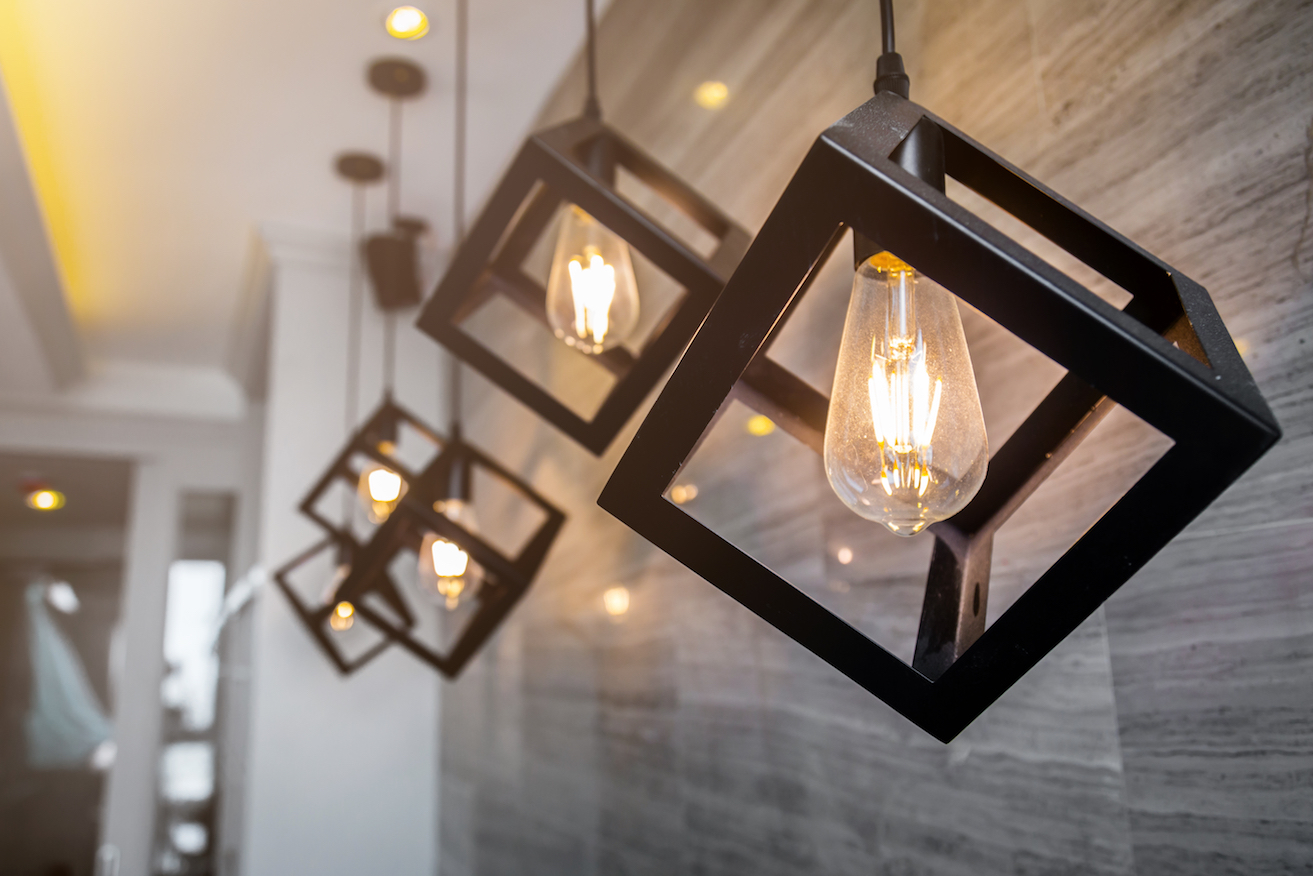Here, Dominick Sandford, Director and Head of Supply Chain, Merchandising and Marketing at ElectricalDirect, looks at the latest trends in commercial lighting and how contractors can help their customers to achieve the intended design.
There are many factors influencing modern lighting design, from growing evidence of the impact of lighting on people, to the events of the last year changing the way we live and work.
Resimercial design for offices
A long-term trend that has impacted office design is the evolution of work patterns away from the conventional 9-5, to include more flexible and remote working. The concept of resimercial design – the blending of residential features into office environments – has been around for a number of years. However, this idea is growing in popularity as businesses evaluate how they use their office space in light of the past 18 months. The aim of resimercial design is to create a more comfortable working environment to improve productivity and reduce stress, as well as attract and retain employees.
Lighting is a key part of this and can help to create a specific atmosphere in different parts of the office. Establishing areas that reflect elements of a living room aesthetic, with comfortable chairs, carpet and soft furnishings, can provide a place where colleagues can meet or where individuals can work away from their desk. Here, softer ambient lighting can create a relaxing environment. Selecting lighting with a lower Kelvin (K) value, ideally around 3000K, will produce a slightly warmer, more inviting light compared with typical office lighting. Alternatively, high-quality ‘white’ light (4000-4500K) can be used in break areas to replicate the energising properties of natural light.
Lighting and wellbeing
There is a growing focus on how the environments we live, work and learn in can impact our wellbeing. Lighting has a significant effect on the health of people as the optimum design can help support the natural sleep/wake cycle as well as boost productivity, concentration and mood. For example, cooler toned white light can help people feel more awake and focused.
In addition, there is now a greater appreciation of how glare in indoor environments can impact people including causing headaches, eyesight issues and general discomfort. The WELL building standard explains that glare is caused by ‘excessive brightness of the light source, excessive brightness contrasts and excessive quantity of light’. There are a number of factors that affect the levels of glare including the position, intensity and number of light sources (both natural and artificial) and the reflectiveness of the surfaces within a space.
The Unified Glare Rating (UGR) is a measure of the glare that will be experienced by occupants. The UGR scale runs from five (low glare) to 40 (very high), with the recommended level being 16 or less for technical tasks and 19 or less for offices. Because so many factors determine the actual level of glare, the UGR can only be calculated for a room or area within a building rather than for individual fittings. However, in selecting luminaires it is important to look for those that will enable the appropriate UGR rating to be achieved. For example, low glare products will often be designed to produce high-quality light and feature diffusers to minimise direct reflections. These will usually carry a ‘UGR<19’ label indicating that, when included in a well-designed scheme, it can achieve glare levels below UGR 19.
Flexible retail
With many retail businesses needing to adapt to changing situations, the fit out of retail units may need to reflect the fact that the tenants could change frequently. Versatile lighting such as high-quality track lighting, which can be repositioned as required, will allow tenants to adapt the illumination to their needs and store layout. Also, the installation of colour tuneable lighting will mean tenants can adjust it to create the atmosphere that best suits the items that are displayed.
The rise of outdoor spaces
The events of the past year have pushed many cafes, bars and restaurants to create outdoor areas that are now becoming permanent features. These spaces can be enhanced with the right exterior lighting, for instance LED bulkhead lights or up- and down-lighters can provide excellent low energy options that deliver high quality ambient light, with styles suitable for a range of applications. In addition, festoon lights, recessed decking lights, ground spots and bollard post lights can all be used to create a range of effects and levels of light depending on the requirements of the business.
Vintage revival
From a modern take on retro styling in homes to vintage looks for retail units and hospitality environments, there has been a surge in the popularity of classic styles when it comes to lighting. Innovations in LED lighting means these often stylised designs can meet both the functional and aesthetic requirements. For interiors, pendant lights paired with LED filament bulbs can help deliver a retro feel while wall-mounted lanterns in classic styles are ideal for outdoor applications.
When looking at any commercial project, it is important to choose a supplier that can offer a wide variety of products to meet the needs of different customers. ElectricalDirect has a huge range of lighting in stock, with flexible delivery options so you can get the items you need, exactly when they are needed. The company’s expert customer service team is available seven days a week to provide you with the help and advice you need.



